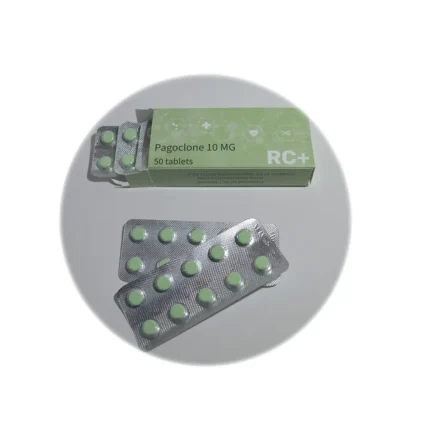Pagoclone:
Pagoclone is an interesting compound belonging to the class of Cyclopyrrolones. It is a research substance that has attracted the attention of scientists, researchers and chemists because of its potential pharmacological properties. In this comprehensive exploration, we will discuss Pagoclone in detail, including its description, general characteristics, history, chemical structure, legal status, dosage, possible effects and precautions.
Description
Pagoclone belongs to the class of Cyclopyrrolones, a group of compounds with a diverse range of pharmacological effects. This compound is often studied for its possible anxiolytic (anxiety-reducing) properties. Anxiolytics are substances that are being studied for their ability to reduce anxiety without causing severe sedation or addiction. Pagoclone can come in various forms, including powders or pellets of 10 mg.
General
Pagoclone is a synthetic compound first synthesized and investigated in the pursuit of new anxiolytic agents. This class of compounds is known for its ability to interact with GABA receptors in the brain. GABA (gamma-aminobutyric acid) is a neurotransmitter that has a calming effect on the central nervous system. Pagoclone and similar compounds are being studied for their potential role in alleviating anxiety disorders.
History
Pagoclone’s history is closely tied to research on anxiolytics and the development of compounds that can reduce anxiety without the sedative side effects of benzodiazepines. Although Pagoclone has never reached approved drug status, it has attracted attention in the pharmaceutical and research communities because of its promising properties. Research on Pagoclone and related compounds is still ongoing to fully understand their safety and efficacy.
Chemical Structure
The chemical structure of Pagoclone is complex and includes several functional groups that allow interactions with receptors in the brain. Pagoclone’s CAS number is 163521-08-2, and its chemical formula is C₁₄H₁₉Cl₂N₃O₄. The molecular weight of Pagoclone is approximately 370.22 g/mol. These details are critical for researchers and chemists interested in this compound.
Legal Status
Pagoclone’s legal status varies from country to country. It is important to note that Pagoclone is usually considered a research substance and is not approved for human consumption. The use of Pagoclone for research or other experimental purposes must comply with local laws and regulations. For the latest information on the legal status of Pagoclone in your area, you are advised to contact the relevant authorities.
Dosage
The dosage of Pagoclone may vary depending on the specific study or experimental purposes. In many cases, Pagoclone is sold in 10 mg pellets, which can be easily dissolved in solvents for experiments. It is essential that researchers follow proper dosing and safety procedures when handling Pagoclone or similar compounds.
Possible Effects
The potential effects of Pagoclone are still being studied, and more research is needed to get a full picture of its pharmacological properties. However, research suggests that Pagoclone has anxiolytic properties, meaning it may reduce anxiety. However, the exact mechanism of action and potential side effects of Pagoclone are not yet fully understood.
Precautions
If you are considering using Pagoclone for research or experimental purposes, it is of utmost importance to take the necessary precautions. Make sure you understand and follow the legal requirements in your area. Handle Pagoclone with care and follow proper safety procedures to minimize risks.
In conclusion, Pagoclone is an interesting research compound with potential anxiolytic properties. Research on this compound and similar substances continues in order to fully understand their potential uses and safety. It is essential to comply with legal requirements and safety procedures when handling Pagoclone for research purposes.

